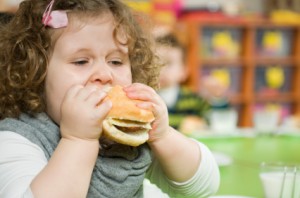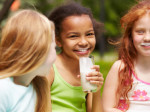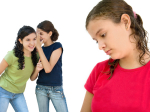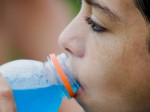 Easter can be a very difficult time for overweight children and their parents. The pressure begins in supermarkets and garages that begin stocking chocolate treats months before the holiday weekend starts. Much of this confectionary is displayed at the point of purchase and end of shopping aisles to increase the likelihood of impulse buys.
Easter can be a very difficult time for overweight children and their parents. The pressure begins in supermarkets and garages that begin stocking chocolate treats months before the holiday weekend starts. Much of this confectionary is displayed at the point of purchase and end of shopping aisles to increase the likelihood of impulse buys.
Unfortunately the expectations of children and parents to exchange Easter eggs can not only stretch the food budget but can also exert extra pressure on family members struggling to lose weight. Here are some examples of pressures that overweight children face.
- Having siblings or friends that are “skinny and active and can eat anything”
- Grandparents and whanau that bear gifts of lollies, crisps and chocolate.
- Teachers who give children lollies or chocolate bars as a reward for achievement.
- Chocolate bars and lollies sold as fund-raisers
- Birthday parties; restaurant meals with the family or friends and takeaways.
- Lunchboxes seem boring when everyone else brings junk foods to school.
- Summer swimming and PE classes at school when overweight children become more self-conscious of their weight and shape.
- It can be very hard to buy clothes that are big but fashionable for children.
Don’t worry be happy
It’s easy to adopt the attitude of “she’ll be right – I was fat at school too” or to minimise the effects of weight gain with throw away comments like “we all die of something” or “don’t be mean and miserable.” Sadly it is the obesity disease that is the “misery bag” as it robs youngsters of their self-esteem and choices and sets up health problems for later life such as:
- Cardiovascular: – coronary heart disease; high blood pressure; stroke
- Endocrine: – Type 2 diabetes; thyroid function; hormones governing fluid balance, growth and sexual development etc.
- Gastrointestinal: – reflux, heartburn, gall stones and fatty liver.
- Respiratory: – sleep apnea and asthma
- Bone strength: – joint and muscle pain; changes in gait; fractures of femur and elbow
- Some forms of cancer
- Psychological and social problems: – discrimination; low self-esteem and confidence
Measuring progress
What you don’t measure you can’t change and so body mass index (BMI) is a useful measure to determine childhood overweight and obesity. It is calculated using a child’s weight and height. BMI does not measure specifically the body fat, but it is a reasonable indicator of body fatness for most children and adolescents.
A child’s weight status is determined using an age and sex-specific percentile for BMI rather than the BMI categories used for adults. This is because children’s body composition varies as they grow and differs for boys and girls.
The CDC growth charts are used to determine the corresponding BMI-for-age and sex percentile. For children and adolescents (aged 2—19 years):
- Overweight is defined as a BMI at or above the 85th percentile and lower than the 95th percentile for children of the same age and sex.
- Obesity is defined as a BMI at or above the 95th percentile for children of the same age and sex.
Apart from weight, height and BMI measurement it is also possible to monitor changes in central adiposity by measuring a child’s waist circumference every 3 – 4 weeks.
Studies of growth rate patterns show that children who are overweight in adolescence gained weight excessively in early childhood (i.e. from 2 – 3 years old). Also girls become overweight by age 5 years where as boys gathered weight after 8years of age. Findings also support the view that if parents are overweight their children are at greater risk of being overweight too.
If you want to discuss changes in your child’s growth rates then contact us now.
How big is the problem?
A 2008-2009 Diet in New Zealand Survey released in September 2011 surveyed around 5,000 people aged 15 years and over found 28% were obese. Another study carried out in 2006-2007 found 8% of children were obese (down from 9% in 2002). As obesity is a major risk factor for Type 2 diabetes, experts warn that New Zealanders are facing a diabetes ‘pandemic’ if more is not done soon to help people to lose weight and improve their diet.
What can the community do to help?
The Government
Curb food advertising: Starting in 2006 efforts by the government to stop the sale of high fat foods and, high sugar drinks sold in school cafeteria’s and to limit the daytime advertising of junk foods on television are moves being credited with the slowing rate of obesity in children.
Fruit in schools: this is one project that ensures that fruit is issued to low-decile school children.
Green prescription: Originally aimed at adults this can encourage parents to keep active.
Kiwisport: the government is funding a school program for year 1 – 8 year old students and 9-13 to improve the use of sports facilities.
Before Schools: this offers a before school program aimed at identifying children at risk before they take up a full school day.
Teachers
When teachers talk about healthy foods in class and then hand out lollies to students who do well they unwittingly create a double standard. Setting up a points system for good work that can be traded for privileges encourages everyone in the class to succeed.
Grandparents, whanau, neighbours and friends
Although the odd marshmallow egg can do no harm, grandparents (and older people) can undermine the efforts of parents to be healthy when they always come to visit laden with confectionary and snack foods. Instead they need to realize just how much more they have to offer their grandchild in time and patience than their busy working parents. They can teach children how to shop, cook and grow foods. They can play a game, read a story, kick a ball, teach children to knit, sew or build something. Most of all by sharing and reinforcing the importance of doing things together they are helping to strengthen the family bond, build self-esteem and improve the mental health of all family members.
Coaches and PE teachers
Many children gain confidence and self-esteem by participating in sports. So when coaches and PE teachers take an interest in overweight children, e.g. by giving them extra exercises they can practice at home, they are passing on invaluable skills that help to strengthen the body and mind. Also when children play team sports it helps to build confidence and feelings of self-worth.
The parents of friends
When overweight children come to your house for an after school snack try to serve healthier food such as muffins, pikelets, scones and trim milkshakes rather than biscuits and cake. If catering for parties offering soft drink then try to also provide water, energy free soft drinks; frozen yoghurt or sorbet rather than ice cream and popcorn rather than crisps. Place the emphasis on activities the children can do together according to their age such as swimming, biking, skating, tennis, ten pin bowling, swing ball, skipping rather than over catering. If you can make the party around a mealtime it can prove to be cheaper and healthier in the long run.
Parents
Studies have shown that overweight parents fail to recognise that their own children are overweight. This may be because they believe that being overweight is a family characteristic that is genetically determined and something they cannot change.
Parents also worry that if they bring up the weight topic with their child, when they are still growing, they may be setting their child up for an eating disorder in later life or may stunt the height growth of their child. While these fears are understandable, they are not correct and every child deserves a chance to find renewed energy and fitness through a healthier diet and exercise.
Alternatives gifts to replace chocolate Easter eggs
- Vouchers for pharmacy items, DVD’s, rides on the hydro slide or ten pin bowling
- An IOU to teach or do something together
- An IOU to go camping
- Play board games or charades.
- Go biking as a family
- Go for a swim or to the beach
- Learn to drive if age appropriate
- Buy them some clothes
- Buy them some pampering treats such as soap, bath oil a new nail polish.
- A voucher for a facial, eyebrow tint or wax
- Buy them a book or photo album
Parents who eat well themselves and exercise lead by example. This encourages children to love and respect their own bodies and value the fitness and health of all family members. In so doing they are providing their children with a gift for a lifetime.
If you would like some practical meal and snack ideas for children or are worried about the nutritional health of your child then contact us now.























































Leave a Reply